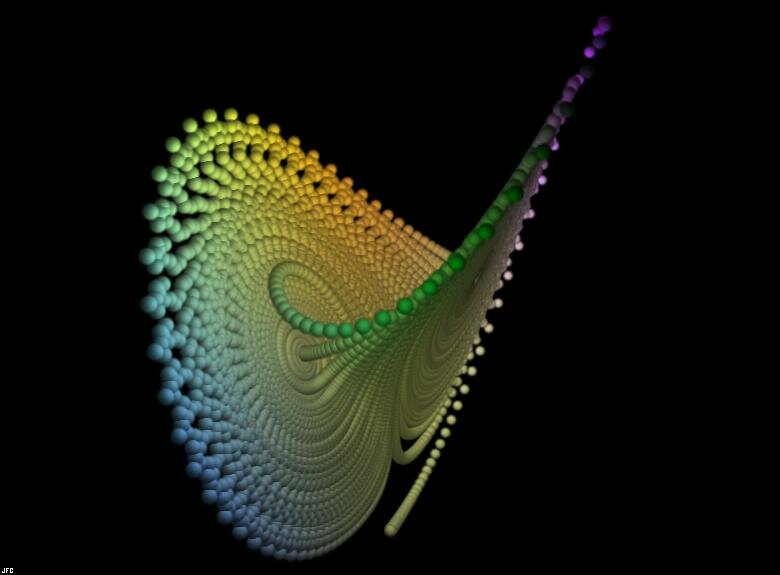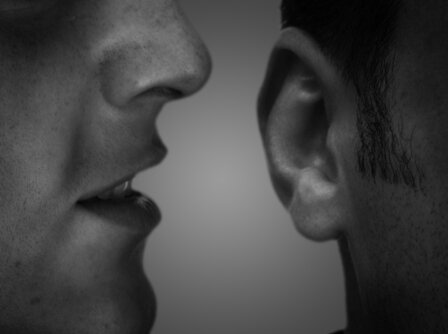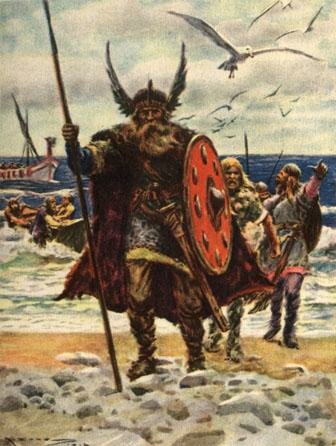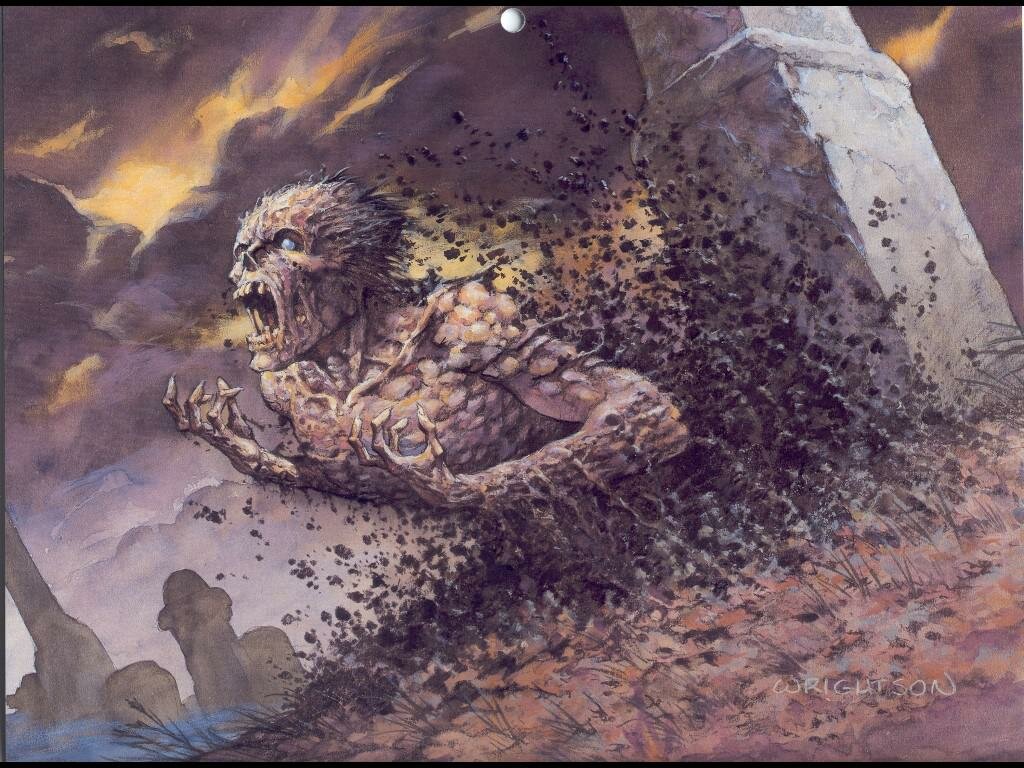20 Common Mathematics Topics Explained
Suggested by SMSThe following twenty mathematics topics are discussed in terms of the areas that each might study and the nature of the mathematics involved. As mathematics is a constantly developing and expanding area of study, it is unrealistic to consider that this collection covers every significant area of mathematics and application of mathematics.
It is also less than ideal to list these topics in progressive difficulty as individual talent and interest will make some studies easier for one person than another. However, the hope is that they will develop in understanding and knowledge and that they will provide a guide to the breadth and brilliance of mathematics.
1. Pre-Algebra

In preparation for a study of Algebra, it is important to have a solid grounding in concepts and applications that will provide the basis for further study. This includes a range of relatively simple concepts and conventions including, Absolute Value, Base Number System, Fractions and the Real Numbers.
Our first experience of Mathematics is usually through Arithmetic, but that’s not to say that they are synonymous. In fact, the ability to perform arithmetic has little bearing on the ability to understand and apply mathematical concepts. It is handy and certainly speeds up the process, but there are numerous examples of brilliant mathematicians and scientists that struggled with Arithmetic.
Arithmetic is largely centered on the ability to use the basic operations of addition, subtraction, multiplication and division. Much of this is done through memory rather than a process, but as the numbers become larger, most of us need to revert to pencil and paper or at least taking time to think through the task.
Furthermore, the place of Arithmetic Laws, such as the Commutative Law, Associative Law and Distributive Law, plays a significant role in developing an understanding of processes including factorization and simple algebraic operations.
Similarly, a working knowledge of the Cartesian Plane is essential to further study. The Cartesian Plane is formed by the intersection of two axes, the horizontal labeled “x” and the vertical labeled “y”. The point of intersection is called the origin and has a value of zero on each axis. From the origin the axis are graduated with positive numbers to the right and up and negative numbers to the left and down.
Points on the plane are located at the intersection of grid lines drawn from each axis. The point (2,3) is found vertically in line with the number 2 on the x-axis and horizontally in line with the number 3 on the y-axis.
This is the basis for visual representation of functions, vectors and the manipulation of figures through transformations.
Within a Pre-Algebra study there should also be a reference to the investigation of Pythagoras Theorem. Pythagoras Theorem works through the agency of right angle triangles. To apply it fully, we need to identify that the side opposite the right angle, the longest side, is the hypotenuse. With this understood the Theorem states that the sum of the squares of the two shorter sides will equal the square of the hypotenuse.
By manipulating the Theorem, it is possible to determine the value of the third side of the triangle when provided with any two other sides. When given the hypotenuse and one other side the Theorem can become:
c2 – a2 = b2
Within the study of Pythagoras Theorem, a number of triads can be found. These include, (3,4,5), (5,12,13) and (7,24,25) and they are sets of side lengths that will always form a right angle triangle. Even when they are increased by scale factors, they maintain their form, such as, (6, 8, and 10) and (15, 36, 39).
2. Algebra

Mathematics is basically about recognizing patterns. To represent these patterns and the ideas that grow from them a system of numbers, pronumerals and conventions was devised, which is known commonly as Algebra.
This includes applications that focus on functions of degrees greater than one. The degree of a function is determined by the highest index of a variable in the function. For example, a quadratic function is a second degree function as it is expressed as f(x) = ax2 + bx + c. The exploration of these functions includes their factorization into roots.
Algebra also addresses the concepts and conventions of Set Theory. These investigate the principles of universality – all possible events, subset – sets within sets, intersection and union.
Other relevant concepts include infinity and the places geometric and arithmetic mean can play in modeling real-life events.
3. Geometry

Geometry is the study of shapes, angles and where things really are in relation to other things. When a two-year-old is working out which block goes through which hole in the shape bucket, they have begun the study of geometry.
Through a process of tests and definitions, we are then able to identify and classify the variety of shapes through the lengths of their sides and the angles of their vertices. Such investigation leads us to recognize patterns in the angles that lines make when they intersect and how we can apply these in areas such as architecture, navigation and art.
Geometry also provides a means for discussing spatial awareness. The use of direction and distance allows us to locate items and, more importantly, it allows us to discuss their position and movement in an explicit and measurable way.
The study of transformations allows us to discuss other movements of objects as well, including reflection and rotation. We can also distinguish changes in shape through dilation, that is, enlargement or reduction.
Geometry can be as concrete as the square peg having to go into the square hole or as abstract as an imaginary plane where objects are manipulated through space and time.
Within the study of Space, a major element is the topic of Polygons. A Polygon is a two-dimensional closed figure consisting of straight lines only. Traditionally we think of hexagons, pentagons and even squares as Polygons, but the definition allows for more.
The neat evenly drawn shapes that are often examples of Polygons are actually regular Polygons. These are shapes with the same length sides and the same size angles. However, irregular Polygons are very common in real-world applications.
Beyond the concrete examples of Geometry, there is also a theoretical, more abstract, approach that allows for the study of hypercubes and hyperplanes, where traditionally geometric figures are given the scope to grow beyond their traditional dimensional conventions.
4. Trigonometry

Trigonometry works from the relationships between the sides of a right-angle triangle.
The side of the triangle that isn’t connected to the right angle is called the Hypotenuse. This is the longest side of the triangle.
With that in mind, decide which vertex, corner, you are looking from. This is your orientation.
The side of the triangle that joins this vertex is called the Adjacent side.
The side that doesn’t join this vertex is called the Opposite side.
Once these sides are identified, they can be used to find unknown lengths and angles of the triangle. This is because, regardless of the length of each side, the ratio of the side lengths will always be the same for a given angle.
For example, if the vertex forms a 30° then the ratio of the Opposite side and the Hypotenuse will always be 1:2. Whether the sides are 3 and 6 inches, respectively, or 300 and 600 miles, at that angle the ratio will always be the same. Using the principles of Similar Triangles these properties can be applied to any size right-angle triangle.
The basic Trigonometric relationships are
Opposite Adjacent Opposite
Sine θ° = ---------- Cosine θ° = ------------ Tangent θ° = -----------
Hypotenuse Hypotenuse Adjacent
The origin of the values attributed to each relationship is founded on the construction of a Unit Circle, that is, a circle with a radius of 1 and is centered on the origin of a Cartesian plane. As this radius is rotated around the circle, its height above the x-axis can be read as the y-coordinate and in the Sine relationship this draws the y-coordinate into ratio with the hypotenuse, the radius, of 1.
Similarly, the horizontal distance from the origin to the intersecting point of the circumference of the unit circle and the radius is the x-coordinate. This value placed in relationship with the radius, 1, gives the Cosine value.
The same values are also able to be used to determine the Tangent relationship.
Further application of the geometric properties of circles and triangles allows for greater exploration of Double and Half-Angle formulae and Addition formulae.
5. Pre-Calculus

In preparation for the study of Calculus, there a number of elementary concepts and operations that must be understood. These provide the basis of calculations and descriptions and allow for creative and comprehensive discussions of Calculus.
Among these are Transformations of objects in space, including, Translation, Rotation and Reflection, and the use of coordinate systems other than the Cartesian, such as Polar and Spherical Coordinates. Matrix operation including the use of the Determinant, Scalar Matrices and Rotation Matrices are also important.
Furthermore, the ability to use and manipulate complex numbers, exponents and logarithms should be studied and placed in the context of functions. Exploration should look further at the way these functions are handled in calculus, as well as investigating their representation through the study of Conic Sections.
Conic Sections are the shapes created by taking cross-sections at varying angles through a solid cone. They include parabolas, through a vertical cross-section, ellipses, through an angled cross-section, and circles, through a horizontal cross-section.
6. Calculus

Investigations into the gradient, or slope, of a graph are often drawn to the change in one variable in relation to the change in another. The subsequent discussion on the rate of change can far-reaching implications and the Mathematics behind it has a variety of applications. When such investigations move from the confines of straight line graphs to include the gradient of curves, then we enter the study of Calculus.
To determine the gradient of a curve, an approximation can be made. Using the same principle of change in one variable being placed in ratio to the change in the other, a rough idea can be gained. In order to improve the accuracy, the approximation is reduced to smaller and smaller intervals until they reach a limit that is infinitely close to, but not equal to, zero. At its smallest possible interval, the gradient is virtually a tangent to the curve, that is, a line that touches only at one point.
Being able to determine the gradient of a curve at any given point means that we are able to find the points at which the curve reaches its maximum value, minimum value or pauses, inflection points, in its progression.
The use of Calculus to model real-world motion allows us to discuss a range of “rate-of-change” scenarios. This makes it applicable in area from fluid dynamics to nanotechnology and has even been used to maximize investment portfolios.
The derivative of a formula provides us with the equation of the gradient to the curve. In its most simple form this is done by multiplying each term by the degree of the index of its pronumeral and reducing that index by 1.
For example,
y = x2 + 2x + 1 can be written with the indices y = x2 + 2×1 + 1×0
So dy = 2×1 + 1 x 2×0 + 0 x 1
dx = 2x + 2
If we allow this equation to equal 0, we can then determine the x-value of the turning point of the curve:
= 2x + 2
x = -1
Substituting this value back into the original equation provides us with the y-value:
Y = (-1)2 + 2(-1) + 1 = 1 – 2 + 1 = 0
The turning point for this curve is at (-1, 0).
More sophisticated curves and applications require more complex differentiation, but the use of Calculus to help map and model mathematical ideas is invaluable.
7. The History of Mathematics

In the words of Marcus Garvey, “A people without the knowledge of their past history, origin and culture is like a tree without roots.” While it may seem that a study of the History of Mathematics would be better suited to a Humanities program, it must be understood that such a study is deeply relevant to the understanding and future of mathematical study.
Whether it is to study the profound contributions of the Pythagoreans or to investigate the formalization of areas such Topology, the process and influences that encouraged and engendered the development of mathematics can inspire modern thinkers. Even exploring the social and political influences that brought about great advances can have a bearing on the directions and progress of mathematics today.
The origin of calculus may seem an insignificant topic against the continuing development and innovations associated with it, but the reality of the its power to describe the motion of planets holds profound significance. In the same regard, the advancement of algebra from simple roots to become the language of mathematics is fundamental to the creation of new system and understandings.
The study of history has benefits in all areas of endeavor. Perhaps it is even more relevant in the study of mathematics than most other spheres of pursuit.
8. Number Theory

The study of numbers as integers, fractions and groupings defined by their properties is a delving into the nature of the building blocks of mathematics. Scientifically, numbers can be classified and studied for their properties, similarities and individual features.
Concepts, such as prime numbers, perfect numbers and transcendental numbers, provide a structure for the continuing study of numbers beyond, real, rational and complex. This can include the development of theorems around the use and manipulation of these numbers, such as the Prime Number Theorem and the Prime Factorization Algorithm.
The study of Number Theory calls on a knowledge of concepts such as congruency and convergence, so as to discuss the characteristics of numbers and the functions through which they operate.
9. Finite Mathematics

The study of Finite Mathematics is relevant to students of psychology and sociology. Largely it is focussed on the theory of probability and matrices.
Probability furnishes the mathematical foundations for statistics. Although this is a theoretical area of mathematics, the applications used in the study of Finite Mathematics make it a more real-world specific topic. This extends into the investigation of union and intersection, while also considering mutually exclusive and disjoint events.
The use of matrices to assist in the exploration of probability includes knowledge of matrix multiplication and the applications. It also introduces the use of matrices for linear systems and the properties of inverse matrices.
These two areas of mathematics come together in the study of Finite Mathematics creating a practical and successful form of mathematics for studies that have specific needs.
10. Theory of Computation

The place of devices, mechanical and electronic, to aid calculation in mathematics is an ever developing and expanding field. Similarly, the use of software, ranging from spreadsheets to more sophisticated calculation programs, is constantly undergoing innovation and evolution.
This is probably ideally illustrated by the annual “Record-breaking” effort of university students somewhere in the world setting some poor computer to work to generate π to ten million more decimal places than the students of the year before. One can only imagine the computer sighing loudly and remarking, “If I have to” as it hacks out another list of non-recurring decimals like a cat bringing up a hairball.
Thankfully, there are multitudes of more constructive and purposeful applications of computation devices and principles than this. Whether through rudimentary processes or through the use of Cellular Automaton or the Turing Machine, the study of the Theory of Computation invites and encourages endeavors to improve our understanding of the nature of computational operations.
11. Topology

At the foundation of Topology is the concept of congruency. That is, the ability to say that a shape, argument or set of elements is identical in all ways to another. In Topology, two objects are considered the same if they can be distorted to be congruent without causing change to the properties of each. Although the basis of this branch of Mathematics had been discussed and developed for centuries, the title Topology only became the over-arching name for it near the end of the nineteenth century.
In fact, the study of Topology is often described as an investigations of the properties of an object that remain sound despite the distortion, twisting and stretching of the object. In this regard the discussion of manifolds, knots and dimensions can be held with a recognition that the fundamental topological aspects will be preserved.
Through the study of Topology and the manipulation of objects and shapes, the Mobius Strip can be formed and defined successfully. Similarly, the projective plane and the projective space, both of which involve the intersection of a set of lines through the origin are able to be discussed and explored.
Set-point Topology is more abstract and presents possibilities for further investigations into concepts such as continuity, dimension, compactness and connectedness. With these ideas in mind, the Topological Space becomes recognizable as a set with a collection of subsets that satisfy the definitions of the set.
12. Linear Algebra

Moving beyond the high school understanding of linearity being related to y = mx + c, the study of Linear Algebra invites the use of vectors, scalars and matrices to address the systems of linear functions and their transformations.
This includes the defining and application of vector spaces and the use of vector addition and scalar multiplication. Vectors are largely lines with magnitude, size, and direction. In areas such as Physics, this translates to speed and direction, producing velocity vectors. Using the fundamental operations of addition and subtraction, these vectors can be used to solve problems including exercises in the study forces.
Scalars are effectively real numbers used in the study of Linear Algebra. They can be used to multiply vectors and create new vectors within the same finite vector space.
The use of matrices as a means of representing linear transformations provides a unique representation of the transformation. Using methods of addition, subtraction and multiplication, both scalar and matrix, matrices provide a purposeful and skillful method for manipulating and problem solving in Linear Algebra.
13. Probability and Statistics

According to Benjamin Disraeli, a 19th Century Prime Minister of Britain, there are “Lies, Damned Lies and Statistics”. This is a fair assessment of the use of statistics and how they can be manipulated, but the mathematics of statistics is far less malleable.
Statistics is an area of mathematics that organizes information, commonly called data, and uses these structures to study trends. Most people will recognize terms such as average and range and these present the first ideas of “Where most of the data lies” and “How wide the data is spread”.
However, it takes only a brief consideration of the data to see that there are different types of average that we can discuss. The three most common are the:
Mean = Sum of the data / The Number of pieces of data (This is also called the Number of the data)
Mode = The most frequently occurring response.
Median = The middle number when all the data is organized from lowest to highest.
The Range of the data is the difference between the highest and lowest value of the data.
The trick to reading statistics is to look as closely at what is not being highlighted as you do at what you are being directed towards. Celebrating the success of two thirds of the class passing a test, may avoid the fact that three quarters of the class didn’t score more than 60%.
More sophisticated applications of statistics include the deriving of standard deviation and the construction of normal distribution, uniform distribution and binomial distribution. From this work, further study into poisson distribution and covariance follow as a natural progression.
Statistics are great for making a case, but need to be handled with care.
One of the most contentious areas of Mathematics is Probabilities. This largely due to the fact that the results of the theoretical calculations of Probabilities are so readily shown as inaccurate. The topic often loses credibility, its proponents lose faith in the early stages and it can take a significant amount of explanation and goodwill to pull it back into the realm of “real” mathematics.
The central rule to Probabilities is the number of favorable outcomes divided by the number of possible outcomes. In this context favorable doesn’t always mean that the outcome is pleasant or good, it simply means that it is the one being sought. No-one considers an earthquake favorable, but if you’re determining the probability of an earthquake occurring then the data supporting the event is treated as the “favorable outcome”.
More complex Probability calculations are the result of events being dependent on each other and combinations of events occurring that have no determining connection, often described as Mutually Exclusive and Conditional Probability.
14. Discrete Mathematics

The distinction between Discrete and Continuous data is important in terms of the processes and operations that can be applied. By definition, Discrete data is that which can only be discussed in whole or specific units, while continuous has the capacity to be graduate along a number line.
As examples, the number of students in a class must always be treated as Discrete data, that is you can’t have half a student. Whereas the height of the students can, if the measuring apparatus is capable, be taken to such extent that it may consist of numerous decimal places.
So, when we start to discuss Discrete Mathematics we are talking in terms of units that must stand separate from each other. Through this limitation on the values to be used, the study of algorithms, logic and binary systems can be introduced and explored.
Binary systems are limited to working with a base of 2, that is, they have only two numbers 0 and 1. Using this structure, numbers are expressed in terms 0 and 1, for example, 2 is 10. That is, 0 is 0, 1 is 1, but instead of going to a third number, the system now moves into double digits, so 2 becomes 10.
The table below shows the binary code for numbers 0 to 10.
Base 10 Base 2 Base 10 Base 2 0 0 6 110 1 1 7 111 2 10 8 1000 3 11 9 1001 4 100 10 1010 5 101 35 100011
It may be worth noting that, as binary system in base 2, powers of two become comparable powers of “ten”.
The restriction of data to Discrete forms also makes it possible to investigate areas of Combinatory, that is, the study of Permutations and Combinations. This allows us to investigate the structure and possibilities of a range of outcomes. While both are focused on the grouping of elements, the distinction between them is found in the understanding that for Permutations the order of the elements is important, while for Combinations it is not.
Calculations of Permutations and Combinations rely on the Factorial function. Indicated by the inclusion of an exclamation mark after the number, the Factorial of a number is the product of all numbers below it to 1. For example, 5! = 5 x 4 x 3 x 2 x 1 = 120.
When calculating the Permutations of “r” elements selected from a set of “n” possible items the first thing to consider is whether or not repetition is allowed. If it is the answer is nr, that is, n x n x n … r times.
However, if repetitions are not allowed, then the number of possible items decreases with each selection. So the answer will be n x (n-1) x (n-2) … r times. This is best illustrated as n!. But to stop the process after r terms, we must also divide by the terms after r.
As an example of this consider a group of twelve students from which only three are to be chosen. The possible Permutations are given by:
12 x 11 x 10 x 9 x 8 …
------------------------ = 12 x 11 x 10 = 1320
9 x 8 x 7 …
The rule for this calculation is
n! ------ (n-r)!
When addressing Combinations the removal of the constraint of order calls for additional calculations. Largely this means reducing the formula by how many ways the objects could be ordered, so the rule for determining the Combinations possible of “r” elements selected from a set of “n” possible items without repetition is:
n! ------- r!(n-r)!
In the course of such a study, aspects of Fibonacci’s Sequence, Pascal’s Triangle and Magic Squares can be explored within the context of Discrete Mathematics.
15. Graph Theory

The area of Mathematics called Graph Theory is a significant and expansive aspect of the study of Space. It includes tangible and real-world elements, while also being rich with abstract and imaginative ideas. Although the basis of this branch of Mathematics had been discussed and developed for centuries, the first published work on the topic was only written in 1736.
This was in response to Euler’s “Seven Bridges of Königsberg”. The bridges connected two islands in the Pregel River with each other and the mainland. Euler set a challenge to discover a path that crossed all bridges only once. To simplify the problem, Euler created a topological map of the river, islands and bridges. While the map was far from an exact scale drawing of the problem, it contained all the necessary and meaningful information.
Through this exercise, Euler created the idea of Graph Theory to model real-world situations. This included, and has extended, to define the dots and lines of a diagram as vertices and edges. Other concepts were then able to be classified and discussed, such as the degree of a vertex, the number of edges attached to it, a path, the course taken connecting vertices, and a cycle, a path that ends where it began.
Graph Theory has virtually nothing to do with the display of data on a chart and graph paper has little special purpose in the study of Graph Theory. This is because Graph Theory holds a greater potential to explore the abstract and the creative side of pure mathematics.
16. Abstract Algebra

The more that we delve into the structures and nature of Algebra, the further we can move into the theoretical aspects. This is not to suggest that Abstract Algebra lacks a practical context, rather the abstraction of the ideas actually makes it more inclusive of a range of creative and diverse application.
This is evident in the exploration of a range of Algebras, including Boolean Algebra and Lie Algebra. These use the fundamentals of Algebra combined with principles of logic and additional conditions.
Abstract Algebra can also take into account the study of Group Theory. Through Group Theory we can investigate laws such as the Associative Law – a + (b + c) = (a + b) + c, the Identity property – a x 1 = a and the Inverse Law – a = √a2 . It can also present ideas regarding a variety of forms of Groups including Abelian, Cyclic, Finite and Sub Groups.
17. Calculus and Convergence

Building on the understanding and competencies attained in Calculus, a more advanced calculus program would discuss further rules for the application of calculus. These could include the Chain Rule, by which a function can be differentiated using an intermediary function, the Quotient Rule, through which functions in a fractional or divisor state can be differentiated, and the Product Rule, through which functions being multiplied together can be differentiated.
The concepts of Convergence and Divergence are necessary to the continuing study of calculus. By applying Radius of Convergence as a test, it is possible to verify that a function is indeed converging.
The divergence of a function, that is, its continuing growth toward infinity or its oscillating nature that limits its ability to converge, can be tested by using the Integral Test.
The application and study of series including Taylor Series, Power Series, Maclaurin Series and Harmonic Series is able to be carried out in terms of convergence and practical use.
Other practical applications, such as determining Arc Length and the Surface of Revolution would also be extensions on the fundamental understanding of Calculus.
18. Differential Equations
The study of Differential Equations is an introduction to the application and purpose of calculus in the mathematics. Through the exploration of derivatives, both ordinary and partial, the uses of the Differential Equations can be placed in practical and real-world scenarios.
Differential Equations contain derivatives and the process of solving them involves integration, but can also use the separation of variables method. The resulting equation will usually be of a form y = … or f(x) = … .
Through investigation of Differential Equations, methods of solving physical problems including the Fourier and Laplace transformations and Bessel Functions are explored. These solutions can involve first and second order differential equations.
The order of a Differential Equation is determined by the level of derivatives present. The highest level of highest derivative in the Differential Equation, for example, a second order Differential Equation will have at least one second derivative; it may also include first derivatives and constants.
19. Differential Geometry

The study of Differential Geometry is often seen as a study of curvature and distances, on surfaces. This can also be seen as development from the work on Surface of Revolution in Calculus.
Through Differential Geometry it is possible to investigate concepts like the Mean Curvature of a surface and the Gaussian Curvature. These study the amount of bend in a surface and curvature as a property of space.
In dealing with curvature, there is also scope to investigate the properties and characteristics of tangents. This reflects the initial intent of Calculus to define the gradient of a curve and can be extended into the development of Tangent Bundles, which are constructed from the tangent spaces of a series of points.
The use of scalars and vectors plays a role in this work as does that of matrices to represent them.
20. Analysis

Analysis is the study of functions, real and continuous, so as to determine their features and characteristics. This can include the study of Delta Functions, Gamma Functions and Functional Analysis, which allows for the investigation of infinity vector spaces.
From generalized applications of Calculus to determine curves and stationary points, Analysis considers the use overlap of functions through Convolution and the use of measures to assist in the understanding of integration and differential equations. This can include the study of the Lebesgue Measure and the Cantor Set.
Through Analysis there is also study of Bernoulli Number and the Fourier Series. Through these the study of trigonometric functions is further explored within the realm of calculus and through the operations of Bernoulli’s Number and the Fourier Series.










